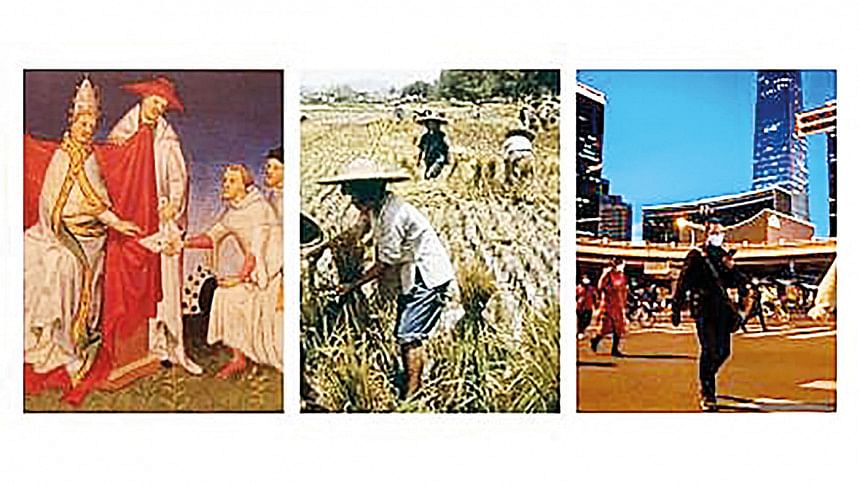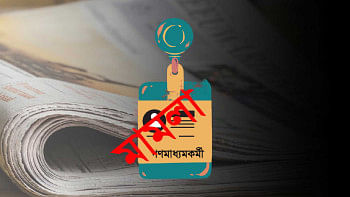Neither Tranquil Mandarins nor Yellow Devils

Many centuries ago, Chinese pilgrims came up the Bay of Bengal on their way to Buddhist sites in the Subcontinent. We have no record of their conversations with the people of Bengal but it was the accurate accounts of early Chinese travellers that enabled archaeologists in the 19th century to rediscover the lost Buddhist sites like that inside a hill at Paharpur.
A more modern Chinese settlement in Bengal that has left us the word chini for sugar was largely curtailed sixty years ago by the dispute over the Himalayan border, the McMahon Line above Bengal a remnant of aggressive British imperialism earlier in the 20th century.
Today, Bangladesh, like other Sub Continental countries, has its Chinese neighbours within the gates, driving the building of the prodigious rail bridge across the Padma, developing a port hub at Chattogram and proposing a rail link across Myanmar, the Celestial Empire once again a superpower but this time expanding as never before to the Indian, and perhaps every other, Ocean.
The people of the Bengal delta have suffered greatly from empires, whether Persian, Portuguese, British or Pakistani: empires are not a win-win situation and never will be. But while is as well to be wary of empire-building, it is also important to be wary of the stereotypes that invariably accompany it.
When the Japanese were at the gates of Imphal in 1944, they presented themselves as liberators, a clever, ingenious people who were successfully freeing Asia from European rule. The British rulers of India pictured them as cunning and cruel. Both images were stereotypes that served the purposes of those producing the propaganda for or against.
What images does Bangladesh have of the Chinese? No doubt, given the colonial legacy, some of these have, willy-nilly, been bequeathed to us by the West. It is instructive to see how the stereotypes change with the times.
Mandarins
For Europe unlike India, China remained off the map until the 13th century when Marco Polo, among others, made his epic journey to Cathay and reported on a China full of marvels. This report chimed nicely with a superstitious, religious European culture already given to believing in the miraculous and fantastic.
The European Enlightenment in the 18th century ridiculed this farrago, offering a very different view. Leibniz, Voltaire and Quesnay, most notably, canvassed the idea of China as an ideal Confucian state where civil harmony and stability prevailed. Ironically relying on the researches of their opponents, the Jesuit missionaries, rationalist European thinkers used this image to show that a society did not need any religious sanction to be ethical.
Oliver Goldsmith wrote his Letters of a Citizen of the World (1760-1) in the guise of a Chinese visitor, satirizing Europeans for preferring to acquire Chinese frippery rather than to try and understand China. He mocked the way that even the uses of fashionable trinkets, including the pots for infusing a popular new herb, tea, were generally misunderstood.
The idealized view of Chinese civilization was never uncontested. Moreover, the older images often resurfaced. Coleridge, famously, in his poem "Kubla Khan" returned to the medieval travellers' image of China as a marvellous place: "It was a miracle of rare device/ A sunny pleasure dome with caves of ice."
Likewise in the 20th century, Lowes Dickinson, following Goldsmith's epistolary method with his Letters of John Chinaman (1901) adopted the 18th century Enlightenment outlook on China. So did Vikram Seth in his mannered sonnet sequence, The Humble Administrator's Garden (1985).
Peasants
Less happily, in the 19th century as European capitalism and imperialism destroyed the old feudal order at home, feudal China was increasingly dismissed as decadent and backward, its largely symbolic fleet destroyed by the British. Bangladeshis need no reminding of the wretched history of the cross-border trade in tea and opium.
Thereafter the dominant image of China that emerged was of the cunning peasant, especially following the "Boxer" uprising against the foreign imperialists and missionaries. Chinese labourers came to be used as cheap labour across the world, building the American railroads, for instance, and, after being conveyed secretly in sealed trains across Canada, providing labour battalions for the Allies in World War I.
Masters have a way of blaming slaves for their own condition and so was born the ugly racial concept of the Chinese as a Yellow Peril, perhaps a subconscious fear that the roles of masters and slaves might one day be reversed. In one frequently reproduced lithograph, even the meditating Buddha was enrolled as the Peril's presiding genius!
The peasant figure that displaced the mandarin still belonged to the same feudal order. Ah Sin, a comic stereotype created on page (1870) and stage (1877) by America's most celebrated writers, Bret Harte and Mark Twain, was shown as debased and thievish. Whatever the intention of the writers, the effect, at a time of anti-Chinese rioting on the West Coast, was pernicious.
Jack London's portrait of the peasant Ah Cho in The Chinago (1909) was something of an exception to the general run. The French colonial authorities in Tahiti are exposed for the racism that hangs a man even when they find he is the wrong one, so cheap is the life of a Chinese coolie.
That the image of a sly Chinese peasant is not necessarily untrue can be determined from the way it was also used by Lu Xun, China's foremost short story writer in the 20th century. Ah Q (1921) tells the story of a bully and coward who prevaricates in the face of, among other things, revolutionary change. For Lu Xun, a peasant uprising in China would not be successful until the peasantry was properly educated and genuinely spirited.
Fu Manchu
In the 20th century, while China underwent almost permanent revolution in an attempt to free itself from feudalism and foreign domination, the single most influential and lasting image Western culture threw up in response was that of Dr Fu Manchu who, with the manners of a mandarin and the craftiness of a peasant, was a perfect fusion of the two previous stock figures.
For almost the entire century Dr Fu Manchu filled the minds of first book and comic-reading and then film-going and television-watching public. Urbane and fiendish, he was involved in gambling and drugs as part of a plan to bring Europe and America under Chinese control. Historically, of course, the opposite had been true.
As Sax Rohmer admitted, he made his name as the creator of Fu Manchu because he "knew nothing about the Chinese" (depicted in his books as "the most mysterious and most cunning people in the world"). He got no closer to China than the East End of London but his fevered imagination has proved as contagious as any virus.
It is indicative, and also ironical given the British treatment of China in the Opium Wars, that such virulent dreams of a racist, imperialist China seem to have originated in the drug-fuelled nightmares of Thomas De Quincey, the English Opium-Eater.
Pretty Much Alike
When the incumbent President of the USA described the racially-indiscriminate Covid-19 as the Chinese virus he was evidently trading on the 19th century image of the Yellow Peril, updated as that became in the 20th century to the Red Peril. It is an old trick to deflect attention from your own shortcomings by blaming somebody else.
The images of China they elaborate tell us as much about Western culture as about China. As we saw with the stock image of the peasant, the image is not necessarily untrue: it is that it is inadequate, incomplete. The real problem is that a stereotype essentializes a vast and various place. People and places are diverse.
Timothy Mo, in his novel Sour Sweet (1982), parodies the silly prejudice that "all Chinese look alike" by having his Chinese protagonist Lily complain that all the "bland, roseate occidental faces" look the same to her compared with "the infinite variety of interesting Cantonese physiognomies: rascally, venerable, pretty, raffish, bumpkin, scholarly."
In the 21st century we could do worse than let an 18th century English mandarin have the last word. Lord Macartney, Britain's first Envoy to China (1793-4), wrote: "The Chinese, it is true, are a singular people, but they are men formed of the same material and governed by the same passions as ourselves."
Goldsmith, in the introduction to his Letters, had written: "The truth is, the Chinese and we are pretty much alike. Different degrees of refinement, and not of distance, mark the distinctions among mankind."
But Macartney went further. He suggested that before we looked at others we had better take a good look at ourselves. If the English found the Chinese proud of themselves and contemptuous of others, it was because these were the characteristics the English themselves displayed when travelling the globe.
The world we see mirrors us. The first place to look for the Yellow Peril – and the Red and the Black - is in Whitehall and in the White House.
John Drew has been a university teacher on both sides of the Himalaya and of the Atlantic.

 For all latest news, follow The Daily Star's Google News channel.
For all latest news, follow The Daily Star's Google News channel. 



Comments